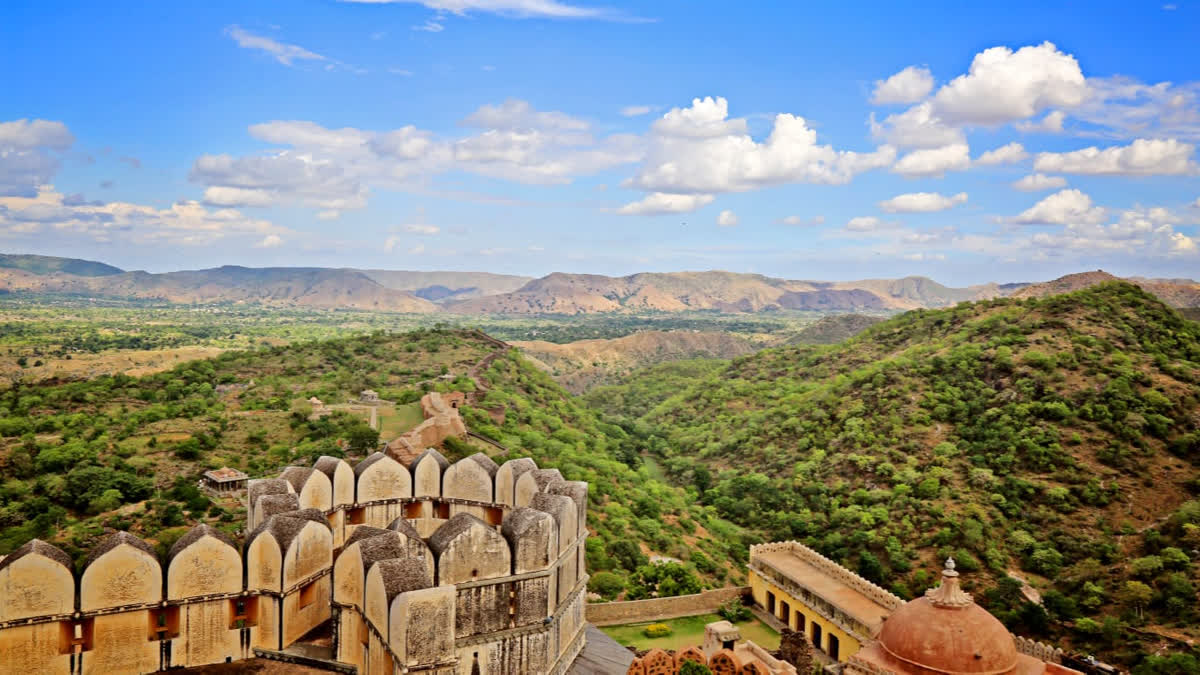Rajsamund/Udaipur:Nestled high in the rugged Aravalli hills, Kumbhalgarh Fort stands as a silent sentinel of time, a keeper of stories etched in stone. Rising 1,100 meters above sea level, the fort, with its imposing walls and 360 temples, is not just an architectural marvel but a timeless symbol of Mewar’s indomitable spirit.
Built in the 15th century by the visionary Maharana Kumbha, the fort embodies the resilience and brilliance of the Sisodia dynasty. At first glance, it’s the wall that astounds visitors—a 36-kilometer-long barrier winding across the hills, earning the title of the world’s second longest wall after the Great Wall of China. Wide enough to accommodate eight horses abreast, this wall protected Kumbhalgarh from invaders, making it a bastion that was never conquered by direct attack.
But Kumbhalgarh is more than stone and mortar. It’s a living chronicle of sacrifice, survival, and legacy. Within these walls, history took some of its most dramatic turns. Here, Panna Dhay, the loyal nursemaid, brought the infant Maharana Uday Singh to safety after sacrificing her own son to save the heir of Mewar. Uday Singh later founded the city of Udaipur, but it was Kumbhalgarh that offered him sanctuary when the dynasty was at its most vulnerable.
The fort is also the birthplace of Maharana Pratap, one of India’s most revered warriors. A locked chamber within the complex is said to have witnessed the birth of this legendary ruler, whose life was devoted to defending his land and honor. To this day, his birth anniversary is marked with solemnity and grandeur, drawing pilgrims and patriots alike.
The sprawling fort complex houses 360 temples, of which 300 are Jain shrines, reflecting Mewar’s pluralistic ethos. Among the prominent structures are the Neelkanth Mahadev Temple, dedicated to Lord Shiva, and Badal Mahal, a palace known for its airy chambers and panoramic views of the Aravalli ranges. To reach these treasures, visitors ascend steep, winding paths that reveal the fort’s layers, each gate—Aret Pol, Halla Pol, and Hanuman Pol—standing as a witness to centuries of history.
